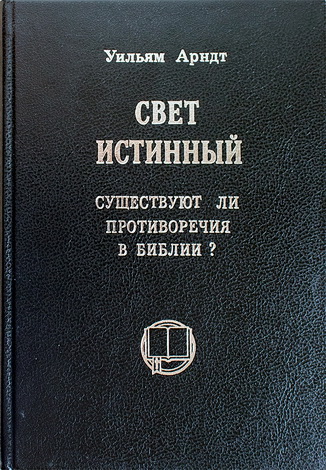
Kittel - Theological Dictionary of the New Testament – 10-volume set - книги и модуль BibleQuote
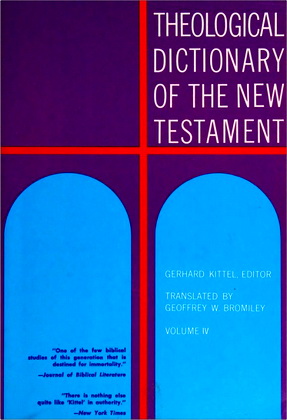
Theological Dictionary of the New Testament – 10-volume set
Edited by Gerhard Kittel. - Grand Rapids, MI: Wm. B. Eerdmans Publishing Company, 1964-1976.
The Theological Dictionary of the New Testament stems from the great labours of Hermann Cremer and Julius Kogel. The goal before its contributors cannot be better formulated than in the introductory words of Cremer's preface to his Biblico-Theological Dictionary of New Testament Greek Usage (1883) in which he refers to the new force and impress and energy given to Greek words as “the horizons of those who spoke and wrote them changed with the point of departure and termination of all thinking.“ The true aim of the present book is to bring out in our discussions this new content of individual terms.
For all our inner agreement with Cremer's aims, and our astonishment at his achievement, we are forced to say, of course, that there have been great changes in the standpoints and methods of modern lexical research. Kogel could still devote many years of unassuming labour to re-editing the work of his teacher. After mature investigation it has seemed better to us to abandon the original idea of a fresh edition and to try to create a new work in every respect. It is in this way that I myself think we may best and most justly redeem the pledge once given to Kogel not to abandon the dictionary. When I recall the unimpeachable integrity of our departed friend, I am confident that we should have his full approval in doing this in a different way from that first intended. It has been a particular joy to me that Mrs. Kogel placed at our disposal the papers gathered by her husband and assured us that in our present work we are genuinely preserving the heritage bequeathed by these men.
In the Theological Dictionary of the New Testament we plan to treat every word of religious or theological significance. The number is much greater than that handled by Cremer and Kogel. We have included many proper names from the Old Testament borne by men of theological importance (e.g., Abel, Abraham, Adam etc.); and also some of the theologically more important prepositions (αντί, διά, έν, εις, συν etc.) and numbers (είς, έπτά, δώδεκα etc.). Under A we have also included such words as άββά, αδω, αήρ, αίνέω-αινος, αίνιγμα, αισχύνη, αΙχμάλωτος, άλας, άλληλούϊα, άμπελος, άνάγκη-άναγκάζω, άνήρ, άνταπό- δομα, άξιος-άξιόω, άπατάω-άπάτη, άποφθέγγομαι, άρκέω, ασέλγεια, αστήρ, άστραπή, άσφάλεια-άσφαλής, αύτάρκεια-αύτάρκης, αυτόπτης.
External lexicographical matters are either taken for granted or treated very briefly. This may be done the more readily as students may now be assumed to have such excellent aids as the Preuschen-Bauer Dictionary and the Schmoller Concordance. Our own task begins in some sort where these break off, namely, with internal lexicography.
The order of words is generally by roots. But this principle has been interpreted with some elasticity, so that derived words with independent meanings are often treated at their own place in the alphabet. Since the limit is hard to define, it has seemed best in practice to include at least a reference to every word treated in due alphabetical order.
* * *
άστατέω
“To be unsteady or restless." a. act. of a flickering glance: Hippiatrica, III, 3; morally “unreliable,” “vacillating,” Vett. Val., 11,37, p. 116, 30: πολύκοιτοι καί άστατουντες περί τους γάμους; esp. for the fickleness of fortune we have the adj. άστατος: Epicur. Ad Men., 3,133; Ps.-Plut. Cons, ad Apoll.,5 (II, 103 f.); Jos. Ant., 20, 57: τό της τύχης άστατον. b. pass, “to be set in commotion,” Plut. Crass., 17 (I, 553b): άστατούσης χειμώνι της θαλάσσης, also spiritually άστατος καί έπίφοβος, Vett. Val., II, 2, ρ. 57, 6. c. “to wander around unsteadily,” either act. or pass.; this is rare in secular usage, though cf. *A Is. 58:7: άστατοΟντας = LXX άστεγους = Mas. מרודים, “the homeless” (for which we should perhaps read מרדים, “the wandering”).
Among various bodily and spiritual sufferings listed by Paul in 1C. 4:11 we read : καί άστατουμεν. The meaning here is c. “we have no fixed abode.” Yet we should not emphasise too strongly the element of “wandering,” 2 for, although this fits the sarcastic style of the whole section, it imparts rather too activist a character. The ορρ. ένδημήσαι προς τον κύριον in 2 C. 5:8 is in keeping with this sense.
Oepke
* * *
γόνυ, γονυπετέω
A. Genuflection in the NT.
Except in Hb. 12:12 (cf. Is. 35:3; Prv. 4:26; Gr. Sir. 25:23; also Polyb., XX, 10, 9) γόνυ is used in the NT only in connection with genuflection. We have a. τιθέναι τά γόνατα in Mk. 15:19; Lk. 22:41; Ac. 7:60; 9:40; 20:36; 21:5. Equivalents are γονυπετεΐν in Mt. 27:29 = Mk. 15:19; Mt. 17:14; Mk. 1:40; 10:17; ττροσκυνεΐν in Mt. 8:2 = Mk. 1:40; though in Mk. 15:19 the sense is “to do homage” ; πίπτειν έπί πρόσωπον or έπι της γης, Lk. 22:41 = Mt. 26:39 = Mk. 14:35; Mt. 8:2 ־= Lk. 5:12. b. κάμπτειν τά γόνατα in liturgical style at R. 11:4 (LXX : ώκλασαν); R. 14:11; Eph. 3:14; Phil. 2:10. The equivalents make it clear that no distinction is intended between bowing the knee and full prostration. Genuflection is linked with prayer to God (Lk. 22:41; Ac. 7:60 etc.; Eph. 3:14), with requests to the Kyrios (Mt. 17:14; Mk. 1:40), with greeting of the διδάσκαλος (Mk. 10:17), with homage to the βασιλεύς (Mt. 27:29) or to Baal (R. 11:4), or to God the Judge (R. 14:10 f.), or to the Kyrios at His enthronement and proclamation as Lord of the world (Phil. 2:10). The gesture thus expresses supplication, abasement, worship, subjection etc.
B. Genuflection outside the NT.
The history of this term belongs to that of the wider concept of προσκυνεΐν. τιθέναι (κάμπτειν) τά γόνατα and γονυπετεΐν (as an independent gesture) are seldom mentioned among the Greeks and Romans, Eur. Tro., 1305. Mostly we have a Latinism (cf. genua ponere, Curtius, VIII, 7,13, Quintil., IX, 4,11; genua submittere, Ovid. Fast., 4, 317; Plin. Hist. Nat., VIII, 1,3; genua inclinare, Ps.- Vergil Anthol., 172, 10b etc.), γονυπετεΐν is found in Polyb., XV, 29, 9; XXXII, 25, 7; Cornut. Nat. Deor., 12 (though Eur. Phoen., 293 : γονυπετής). Equivalents are προσπίπτειν, Hdt., 1,134; VII, 136; ές γόνυ ιζεσθαι, Ps.-Luc. Dea Syr., 55; προσκυνεΐν, Suid. etc. In Gk. and Lat. there is usually no distinction between genuflection and full prostration.1 It is practised a. by a slave before his lord, Nonnus Dionys., 25, 2, though not among citizens, Hdt., VII, 136; Isoc., 4,151. This custom came to Greece and Rome from the East, Liv., XXX, 16,48. The ικέτης falls on his knees before his patron and thus acknowledges himself to be his slave, Heliod. Aeth., X, 16; Nonnus Dionys., 22, 374 f. b. There is genuflection before the gods in prayer (Liv., XXVI, 9,6; Plut. C. Gracch., 16 [I, 482c]), esp. before chthonic deities (Eur. Tro., 1303 ff.), in popular religion (Aristoph. Av., 501 ff.), or in cults which stand under unofficial or oriental influence2 such as the cult of Helios (Soph. Fr., 672; Plat. Leg., X, 887e) or in a hymn to Dionysus Lysios (Ael. Arist., 50, 39). In the normal worship of the official gods there was no bowing of the knee.
In the LXX genuflection is rendered όκλάζειν (έπί τά) γόνατα, 3 Βασ. 8:54; 19:18 (distinguished from προσκυνεΐν in the sense of throwing a kiss with the hand), κάμπτειν (έπί) τά γόνατα, 4 Βασ. 1:13 (cf. 9:24); Da. 6:10; 1 Ch. 29:20 (with προσκυνεΐν ־= to cast oneself to the ground); 1 Esr. 8:70; 3Macc. 2:1 (R) 20; κάμπτειν, Is. 45:23; πίπτειν, κλίνειν έπί τά γόνατα, 2Ch. 6:13; 2 Esr. 9:5. The Heb. equivalents are (ברך (על־ברכים, Ps. 95:6 with שחה hithp προσκυνεΐν and ברע προσπίπτεiv; (כרע (על־ברכים, Is. 45:23; 1 K. 8:54; 19:18; 2 Esr. 9:5; 1 ׳לןךד Ch. 29:20 (Gn. 43:28; Ex. 4:31; 12:27 — κύπτειν with προσκυνεΐν, שחה hithp, but Gn. 24:26, 48 = εόδοκεΐν). The gesture of genuflection occurs as a sign of humility and worship in the prayer of the individual or the community to God at 1 Ch. 29:20; 1 K. 8:54; 1 Esr. 8:70; 2 Esr. 9:5; Da. 6:10; 3Macc. 2:1 (R), and as a sign of abase- ment, acknowledgment and homage before God at 3 Βασ. 19:18; Is. 45:23, before the king at 1 Ch. 29:20, and before the άνθρωπος τοΰ θεού at 4 Βασ. 1:13. Standing, however, is more usual in prayer (Gn. 18:22; 19:27; 1 S. 1:26; Ps. 134 f.).
In the Rabbis there is a systematic differentiation between individual gestures, a. כריעה denotes brief falling on the knee; b. קידה signifies falling on one's face;
c. השתחויה is used for prostration with outstretched hands and feet. Bar Qappara speaks of four prostrations : a. כריעה, inclining ; b. כפיפה, bowing; c.השתחויה,casting oneself down; d. בריכה, kneeling.
In the Christian Church kneeling was customary both in individual prayer and public worship. Although various terms are used (τιθέναι τά γόνατα, Mart. Andr., 8; Act. Thom., 167; Herm. v., 1, 1,3; 2,1,2; 3,1,5; όκλάζειν, Just. Dial., 90, 5; κάμπτειν, 1 Cl., 57, 1), γονυκλινεΐν is the commonest, 4 and becomes a technical term for kneeling in divine service (e.g., Const. Ap., VIII, 10, 2: Orig. Orat., 31, 3). Bending the knee expresses a. subjection (1 Cl., 57, 1); b. abasement in confession and sorrow (Chrysost. Serm. de Anna, 4, MPG, 54, 667 f.; Bas. Spir. Set., 27, MPG, 32, 192c; c. petition, Const. Ap., II, 22, 14. There is an obvious intermingling of pagan and Christian custom in Act. Joh., 42 : (the people after the crash of the temple of Artemis in Ephesus (καί οί μέν αυτών έπ’ δψιν κείμενοι έλιτάνευον־ οί δέ τά γόνατα κλίνοντες έδέοντο־ οί δέ τάς έσθητας διαρρήξαντες έκλαιον־ οί δέ φυρεΐν έπειρώντο.6 The meaning of the symbolical gesture of kneeling in prayer may be gathered from Ps.-Just. Quaest. et Resp. ad Orth., 115 : If kneeling is more efficacious in prayer than standing, why do not worshippers kneel on the Lord’s Day and between Easter and Pentecost? Επειδή άμφοτέρων έχρήν ή μας άεί μεμνήσθαι, και της έν ταΐς άμαρτίαις πτώσεως ήμών καί τής χάριτος τοΟ Χρίστου ήμών, δι’ ής έκ τής πτώσεως άνέστημεν. On 6 days γονυκλισία is the σύμβολον of the fall, and on the 7th μή κλίνειν γόνυ is the σύμβολον ... τής άναστάσεως.
In modern Synagogue worship there is still genuflection to the degree that on the Day of Atonement, at the point in the liturgy which corresponds to the utterance of the name of Yahweh in the worship of the temple (when there was prostration, cf. Joma 6, 2),8 and also on New Year’s Day, at a certain point in the liturgy, there is kneeling and then full prostration.
Schlier
Примечание. В модуль к программе "Цитата из Библии" не вошли конечные сноски каждой из статей. Поиск осуществляется по греческим словам.
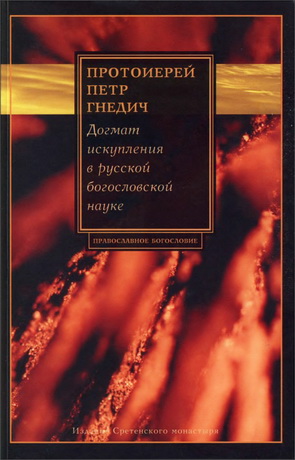
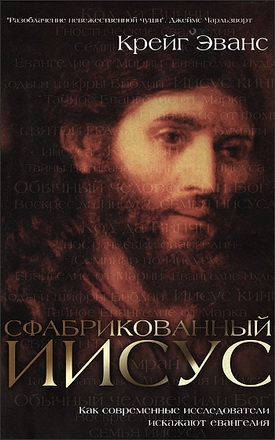
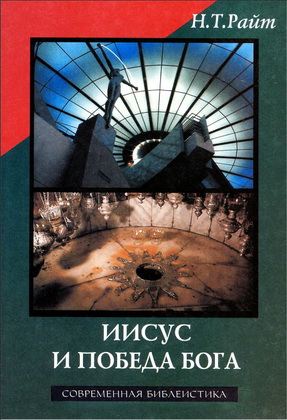

Комментарии (3 комментария)
Второй том пдф поддаётся копировании? Я не силён в английском. Пользуюсь переводчиком онлайн. На просторах инета скачал такой, а он в ОСR как снимок.
И второй, и все остальные имеются в наличии в обработке клуба, с текстовым слоем и возможностью копирования.
Спасибо за шикарную коллекцию! Самый лучший словарь из тех, к-ми прихдилось пользоваться. Такое над держать на полке в бумаге!